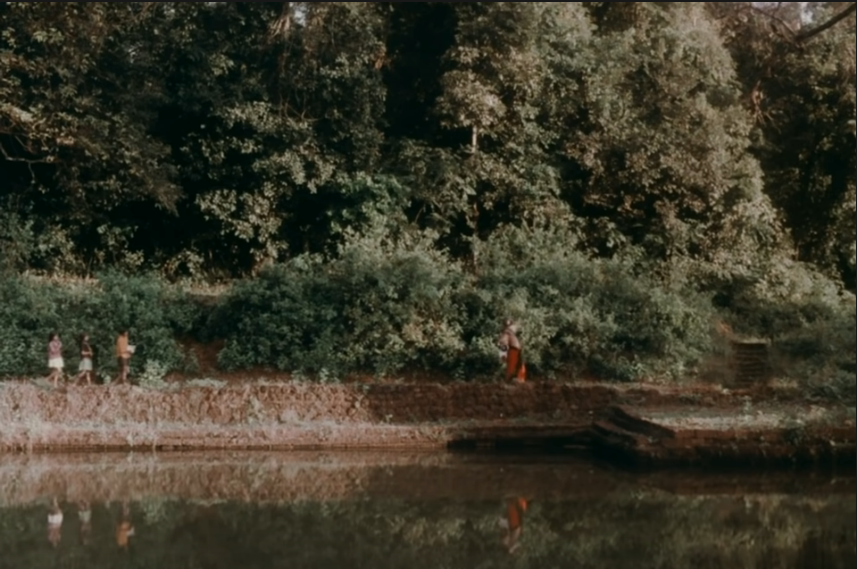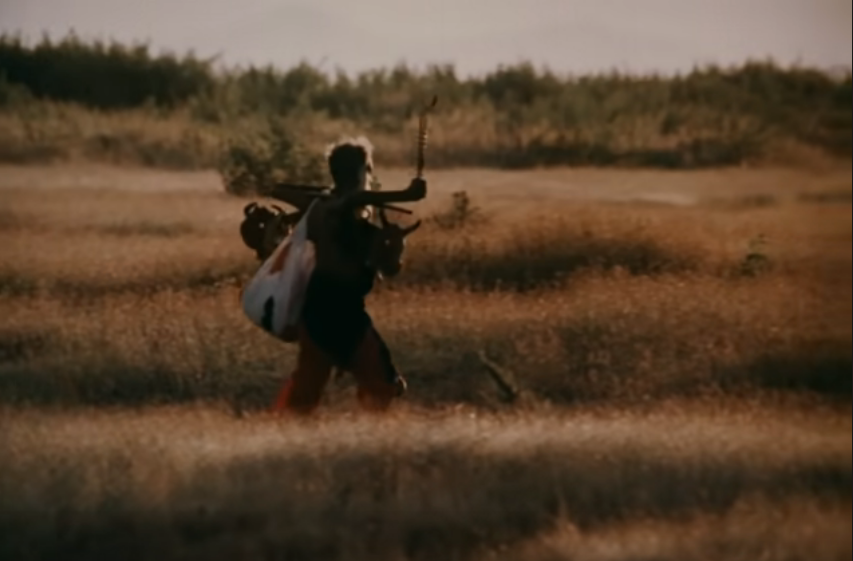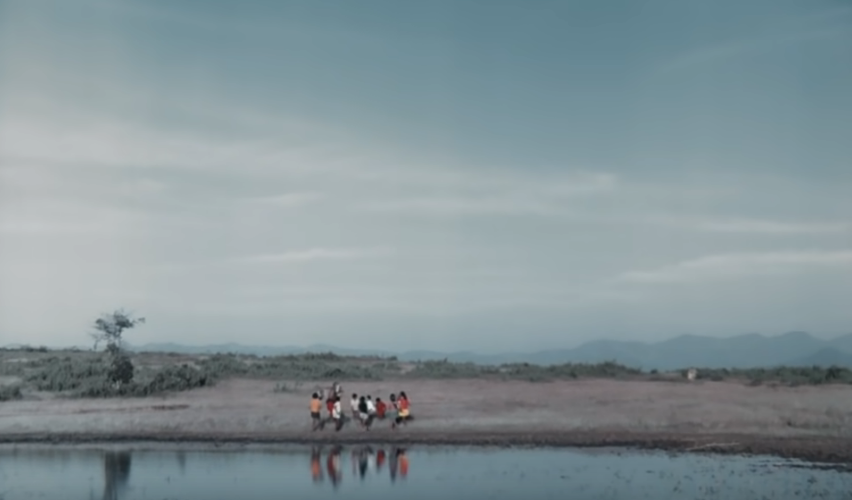With renewed global interest in G. Aravindan’s 1979 film, Kummatty, Amal Nath Rajeevan revisits the film to examine the elements of magical realism that imbues it with timeless cinematic pleasure.
Amal Nath Rajeevan
Recently, American filmmaker Martin Scorsese announced on social media that the 1979 classic Malayalam film Kummatty will get a digital restoration and screening by the Film Foundation’s World Cinema Project, a program co-created by Scorsese. This announcement made a lot of Indian film aficionados happy that G. Aravindan’s masterpiece is getting recognition from the legendary director of pioneering cinema such as Taxi Driver (1976), Goodfellas (1990), and Casino (1995). What made Kummatty a classic, and how was it ahead of its time?
View this post on Instagram
Parents usually make up scary tales of imaginary beings to keep unruly children in line. Human beings use different versions of supernatural phenomena which vary according to culture. Such beings are collectively known by the trope of ‘Bogeyman’ or ‘Boogeymen’. One such version of the Bogeyman trope is the Kummatty from central Kerala, a mythical sorcerer and oracle who can transform into various animals and can acquire their abilities. He is an old man dressed in a mundu, with many ornate animal masks hung on a pole that he balances on his shoulders. He has a fake grey beard and sings folk songs while jingling his ‘palli vaalu’, a bell-studded sword (vaalu). He speaks in a nonchalant manner and often speaks in riddles. He is a nomad, travelling from village to village, singing and collecting alms.
Aravindan’s Kummatty, titled The Bogeyman in English, focuses on the eponymous character, his arrival in a small village, and his relationship with a young boy named Chindan. The film belongs to the magical realism genre, wherein the story takes place in an unnamed village somewhere in Kerala, in a predominantly realistic world, but the people living within it seem to see shapeshifting sorcerers and magic as normal phenomena. This is distinct from the fantasy genre, which takes place in an unreal world or a universe with its own established rules of functioning, like Middle Earth from Lord of the Rings or the ‘galaxy far, far away’ from Star Wars.
Kummatty’s narrative is carried forward by folk songs, with minimal dialogue; it is a musical. The onus, therefore, lies on the cinematographer, Shaji N. Karun, and the music director, M. G. Radhakrishnan, to use image and music to convey the narrative. Karun uses cinematography which blends in the movement of wind, rain, and sunlight, along with that of the characters, reminiscent of the style of Japanese filmmaker Akira Kurosawa. Weather conveys mood in the film, as does ambient light and the time of the day. Karun also uses Kurosawa’s iconic long-lens cinematography and framing—Kummatty uses a 4:3 aspect ratio, but manages to convey depth and great perspective using wide-angle shots. The people in Kummatty do not see myth as myth, and the director makes no extra effort to fully flesh out the presence of magical phenomena. This reinforces the fact that this world is like ours, but one where fantastical things are a mundane presence.

The protagonist, Chindan, lives with his family consisting of his mother, his sister and his father. His pet parrot lives in a cage inside his hut. In the initial moments of the film, in a series of establishing shots, we are introduced to Chindan’s friends, his school, and the village and its people, and we see Chindan and his friends invoke Kummatty’s name to scare friends and passersby. We witness the mystical beliefs of the people in the village when an Ayurvedic vaidyar (medicine man) attempts to treat a sick woman by exorcising evil spirits within her body using incantations. The film does not reveal its magical realism at this point. It is not clear to us, as viewers, whether the people of the village are ridden by superstition or live in a place where magical phenomena exist. Through a narration of a story from a textbook, Chindan tells the viewer a premonitory tale of a shaman-like figure who travels to a king’s court to cure the queen’s terminal illness, but the king refuses to believe in the shaman’s magic.

This could be a foretelling of the Kummatty’s arrival, which is where the film undergoes a major narrative transition from a vague genre identity into full-blown magical realism. Kummatty is shown arriving at the village singing the song, ‘aarambatheerambathu’, heralding his coming. Kummatty is closely observed by Chindan and his friends—they gaze at him inquisitively as he settles down under a tree, takes off his fake beard, and casually smokes a cigarette. As night approaches, Kummatty begins to sing a prayer thanking the gods for rain, the iconic ‘karukara karmukil’, which signals the coming of karkidakam, the last month of the Malayalam calendar, corresponding to the monsoon season in Kerala.
Kummatty represents a sort of gateway between the material and spiritual worlds; he transcends such boundaries. His humanness is well-established in the film when he removes his fake beard, when he indulges in a smoke, or when he becomes ill and has to seek assistance. But there is also something ethereal about him, a mystic aura through which the Chindan and his friends view him, as a figure from folklore—muthassikathayile kummatty (Kummatty from grandmother’s tales), sing Chindan and his friends in the song ‘maanathe macholam thala eduthu’, a ballad about the awe-inspiring abilities of Kummatty. The wonder and awe with which the viewer perceives Kummatty is personified on screen by an old lady who is constantly teased by the children—they startle her by loudly chanting ‘Kummatty!’ She silently watches the Kummatty perform magic tricks by making fruits appear from thin air. She is clearly intimidated by his presence and watches him intently, in stark contrast to Chindan’s mother, who refers to the Kummatty as a ‘bhraanthan’, a madman.
Kummatty quickly wins over the hearts and minds of the children by offering them sweets and biscuits (which are shaped like various animals, perhaps a reference to his shapeshifting powers) and dancing and singing along with them. The idea of an otherworldly being befriending children is not unknown in cinema. Steven Spielberg’s E.T. the Extra Terrestrial (1982) or Brad Bird’s animated feature The Iron Giant (1999) are well-known American examples where a child befriends an alien and a giant robot respectively. In such films, we see the young protagonists maturing emotionally through the unlikely bond. Both E.T. and The Iron Giant feature the aliens using their otherworldly capabilities to transform the lonely, troubled child character’s placid, monotonous existence into an adventurous escapist fantasy. Both films end with the children bidding a tragic farewell to their extra-terrestrial buddies.

Kummatty follows the same narrative, but in a slightly different way. Towards the second half of the film, we see the Kummatty getting ready for his departure from the village. The children and Kummatty have greatly enjoyed each other’s company, especially Chindan. Chindan’s mother had warned him not to spend time with Kummatty, but for Chindan and his friends, Kummatty is a physical manifestation of folklore, magic and wonder—three things central to childhood. Before Kummatty leaves, he asks the children to gather around him while singing a song and gives them various animal masks from his stash. All of them wear the masks, each of a different animal: an elephant, a monkey, a lion-tailed macaque, a dog (which Chindan wears), a bull, a donkey, a goat, and a horse. Towards the end of the song, he brandishes his palli vaalu at the children and they all transform into the animals corresponding to the masks. Chindan, now a dog, runs off to his house, probably to show his canine form to his family, but he is chased off by another dog. Kummatty reverts all the children back to human form and departs before Chindan returns. Chindan runs away from the village, scared and lost, and arrives at a town.
This point marks Kummatty transcending the barriers of the spiritual and material planes by a blatant display of magical power, removing any doubt from the viewer’s mind regarding the validity of Kummatty’s magic. Until that moment, Aravindan masterfully keeps the viewers guessing whether the Kummatty is actually a wizard or a sinister conman. It also marks the beginning of Chindan’s hero’s journey of learning and self-transformation. In the town, Chindan the dog is adopted by a wealthy girl living in a large house. Her cultural difference is outlined by the fact that she speaks English at home instead of Malayalam. She owns several foreign dog breeds—a Boxer, a Dobermann, and a German Shepard. Chindan, now a mongrel, feels profound loneliness and alienation from his new surroundings and falls sick. The girl’s father asks her to discard the mongrel, and Chindan wanders home. In his travels, Chindan learns of the difference between the people in his village and the people of the city. When he returns home, his mother recognizes him instantly and cuddles him while struggling to hold back her tears.
Chindan develops new insights into what it means to be human and its inseparability from freedom while waiting for a year for Kummatty to return to the village so he can undo the transformation. The Disney-animated film, Brave (2012), shares a parallel with Kummatty in its narrative—a Scottish princess, Merida, seeks to save her mother Elinor who has been transformed by a witch into a bear and reverse the transformation before the change becomes permanent. But Brave is a fantasy film, whereas Kummatty uses magical realism—Chindan’s transformation convinces his mother and the villagers of the Kummatty’s powers, no longer dismissing him as a madman. When Kummatty finally arrives at the village, Chindan excitedly scurries to him in his dog form. As Kummatty lovingly embraces Chindan, his transformation is quickly reverted. However, Chindan is not angry at Kummatty for abandoning him, nor does he blame him for the canine existence that he endured for a year. He continues to hug Kummatty as happy villagers including Chindan’s mother gather around the pair. Kummatty’s friendship with the boy is strange, but Chindan seems to have learnt a lesson on class divide and freedom, and seems to value the privileges that he had in his human form. This might have led Chindan to regard his canine life as a lesson rather than a cruel punishment of fate.
The first thing Chindan does is to set free his pet parrot and watch it fly, now knowing the value of freedom. Before the credits roll, we see a flock of birds triumphantly flying. Chindan’s hero’s journey is complete; his innocence and blissful ignorance are tainted, but he is victorious in the end, having gained his humanity and a realization of his life’s great gifts.
The film, although relying on ambient sound, cinematography, and music to convey narrative, never values style over substance, which is how the general public often views arthouse cinema. Shaji N. Karun’s cinematography adds to the storytelling in a subtle way. For example, Kummatty himself is first introduced in a long establishment shot as a dark silhouette walking towards the village in a sunset-lit landscape. We hear his voice first, singing the song ‘Aarambatheerambathu’, and the jingles of his palli vaalu, as he slowly reveals himself with the animal masks hanging on a stick from his shoulders. The cinematography also tends to be darker whenever the Kummatty enters or exits. This helps the viewer distinguish the veil between the mystical and the real in the film. The film is a series of long shots separated by edits, where the lush green backdrops of Kerala are beautifully captured. The scenes which show the children dancing and singing with the Kummatty are one of the most picturesque shots in cinema. The way sound is used by the film also adds to its mystic allure, namely the use of diegetic sound. Diegetic sound is sound or music that originates within the world of the film itself, which can be heard by the characters themselves, as opposed to a background score or a voiceover. All the songs in the film are sung by the Kummatty or the children, and the film crisply captures ambient sound. The chirps of birds and crickets, wind, rain, and thunder all flow in unison with the cinematography, which is a full-fledged feast of the senses for the viewer.
The 88-minute runtime is not long when considering most feature films, but can lag a bit for modern audiences due to its lack of blockbuster filmmaking elements. But for a film made in Malayalam in 1979, G. Aravindan managed to introduce magical realism in film, at a time when people did not know much about Gabriel García Márquez or other foreign writers, and made a film that can be revisited regardless of era. With the 4K remaster about to be released, Kummatty may finally be viewed in its intended glory.
About the Author: Amal Nath Rajeevan finished his Bachelor’s in Communicative English, Political Science, and Economics from St. Joseph’s University, Bangalore. He is currently a Master’s student in Linguistics at Banaras Hindu University and is interested in languages, film, politics, history and culture.
